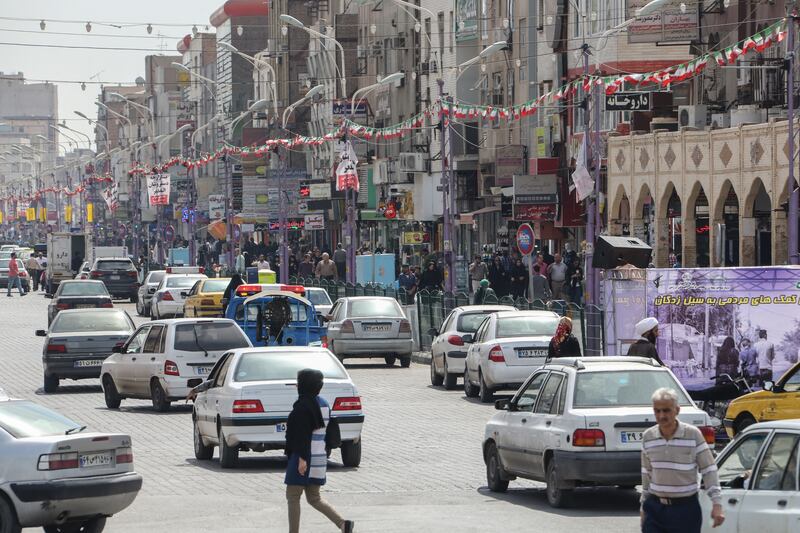Iranian police opened fire on protesters on Sunday night after days of demonstrations in the south-west about water shortages in which at least two people died.
Video showed officers shooting at demonstrators in Susangerd, the centre of the unrest in Khuzestan province.
Footage showed riot police on motorcycles firing at protesters. In one clip, a police officer fires a pistol into the air; at least one other shot is audible.
As in past protests, the authorities appear to have blocked internet connections to stop the flow of video coming out of the region. According to a local network-monitoring service, severe internet disruptions were recorded in Tehran and there was a near-total shutdown in Khuzestan.
Iranian media reported that two people had been killed in the protests. They were identified as Mustafa Naimawi and Qassem Khuzeiri.
On Sunday, Khuzestan's deputy governor in charge of security affairs acknowledged that at least one person had been killed in the unrest.
The state-run Irna news agency quoted Valiollah Hayati accusing "rioters" of killing a citizen in the city of Shadegan. Iran's government has often blamed protesters for deaths during clashes, despite its own history of bloody crackdowns.
Ayatollah Mohsen Haidari, a senior cleric representing parts of the region, told Iran's Fars news agency that "criminal people, affiliated with foreigners and counter-revolutionaries, have abused the people’s demands and shot at them and killed innocent people".
Mr Haidari said he believed the demonstrators' demands and concerns over water shortages were legitimate but called on them to act with "care, insight and vigilance so as not to create any grounds for the enemy to abuse them".
Other local politicians weighed in on the protests, on one hand acknowledging the water problem in the region but also blaming the protests on foreign forces.
Irna quoted Omid Sabripour, an official in Shadegan, blaming "opportunists and rioters" for the deaths.
This is not the first time that demonstrators have taken to the streets in Khuzestan over water. Since the late 1980s, the region has had disputes over water that have led to protests and small-scale conflicts, an issue that experts have long said could turn explosive.
The province is susceptible to turmoil, with clashes taking place between the government and separatists in the ethnically Arab region. A scarcity of resources also makes the area ripe for conflict.
The Khuzestan region, an area that once had large expanses of wetland and was considered to be Iran's fertile crescent, has been turned into drylands as a result of droughts, dam construction and oil extraction. A dam built in 2018 on the Karun river, one of Khuzestan's critical water resources, reduced the water supply by two thirds.
The issue of water scarcity in Iran is not limited to Khuzestan. The government says the country is experiencing a severe drought. Precipitation in Iran has decreased by almost 50 per cent from last year, leaving dams with dwindling water supplies.
The government and judiciary have instructed various groups to address the water problem but little has been done.
To complicate matters, the protests in Khuzestan come as Iran deals with its fifth wave of coronavirus infections and as thousands of workers in its oil industry take strike action for better wages and conditions.
Iran’s economy has also struggled under US sanctions since former president Donald Trump’s 2018 decision to unilaterally withdraw America from Tehran’s nuclear deal with world powers, crashing the value of the country's currency, the rial.







